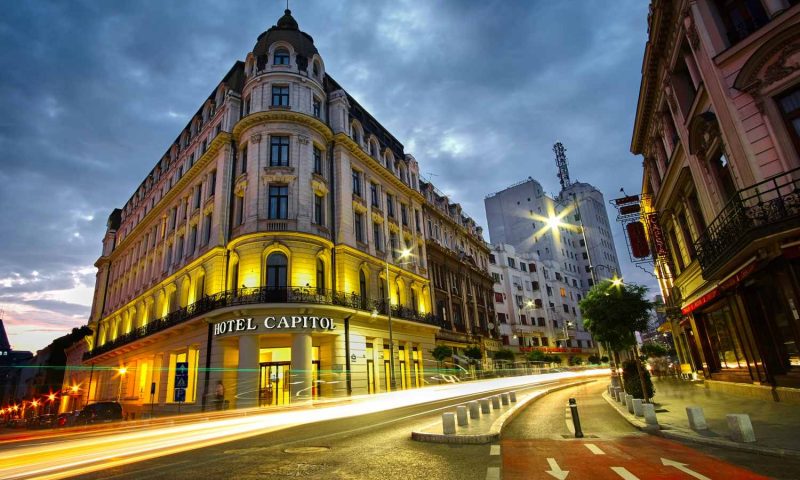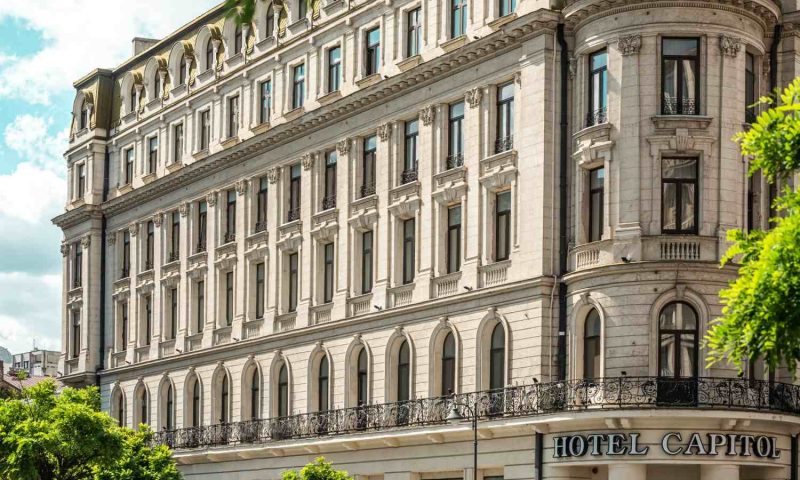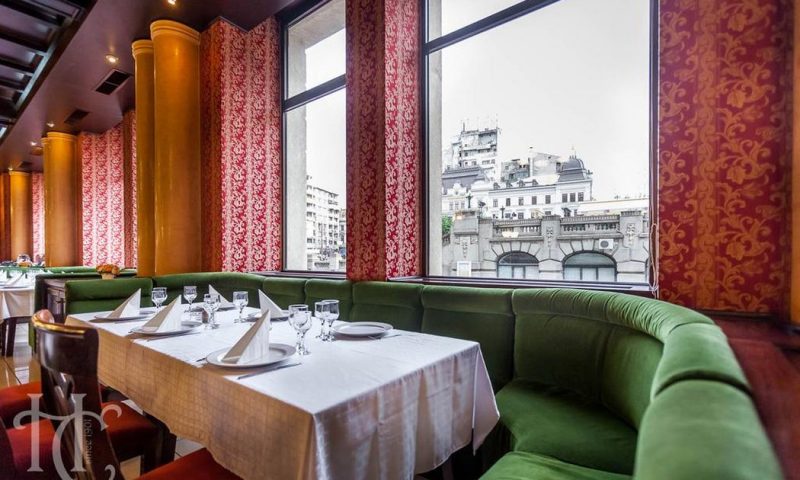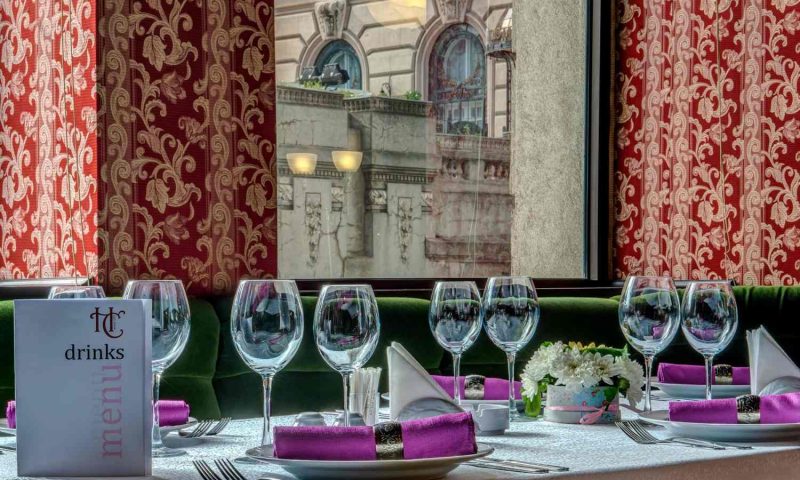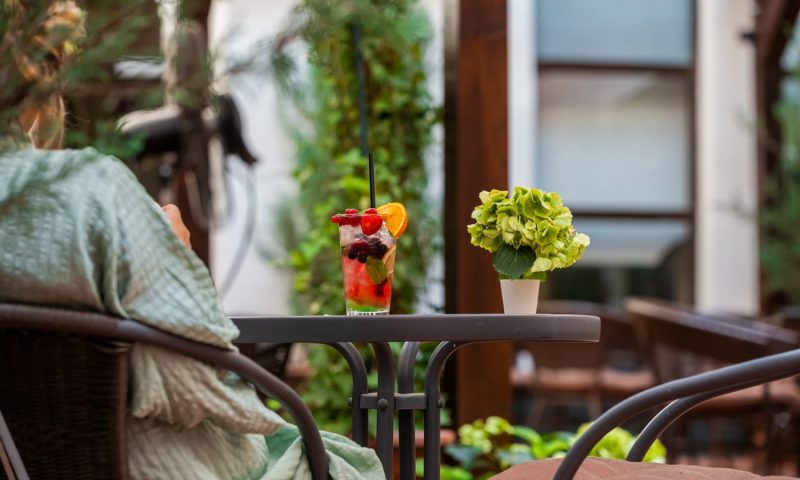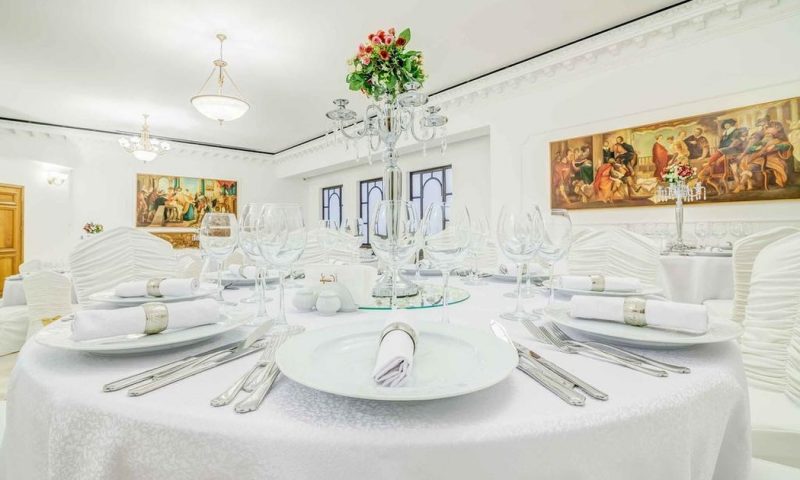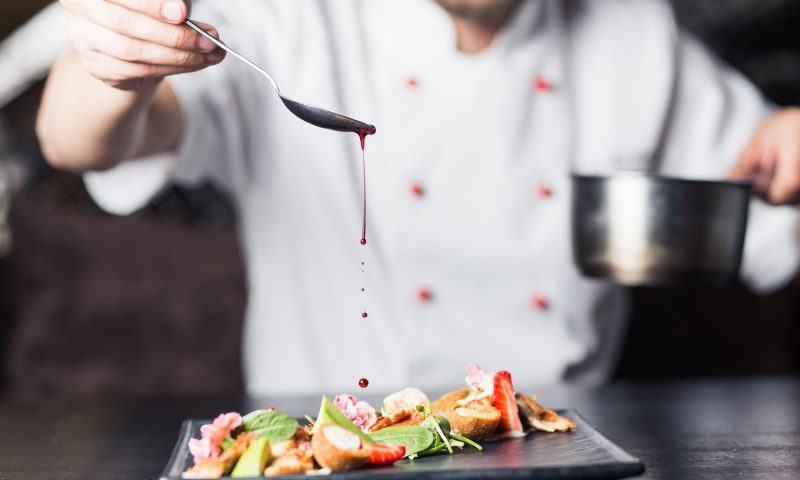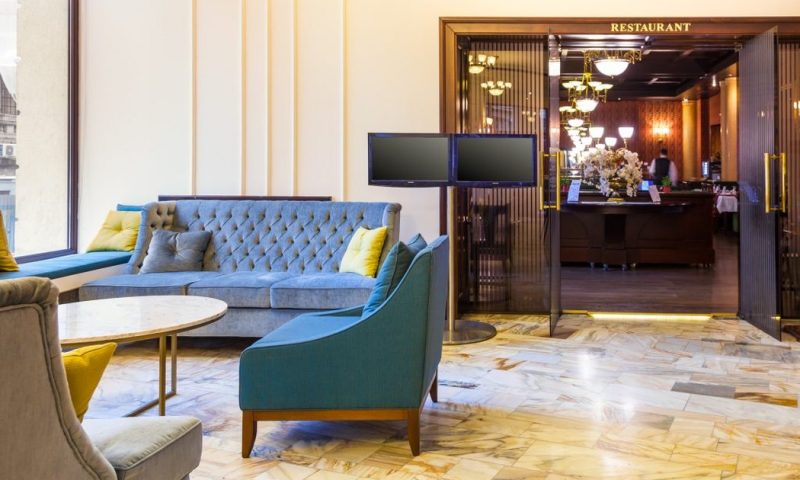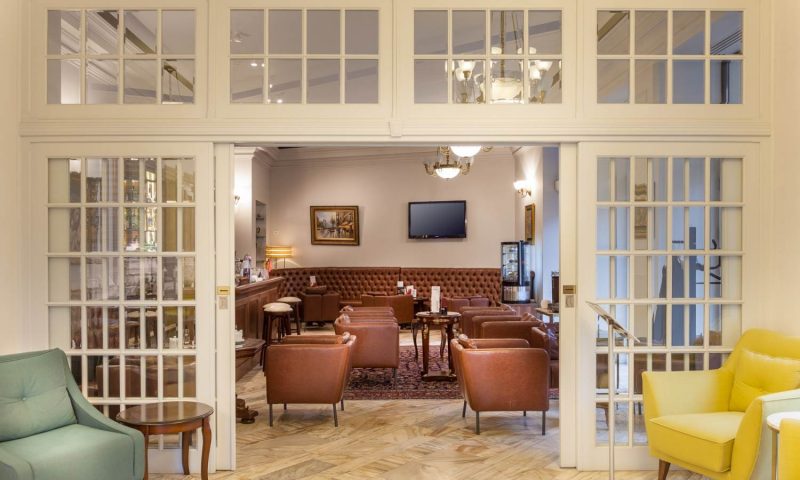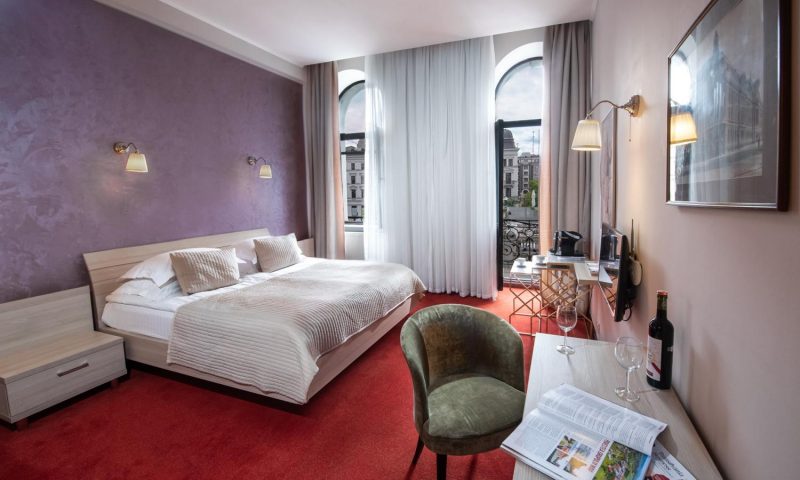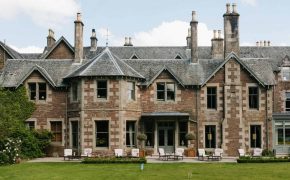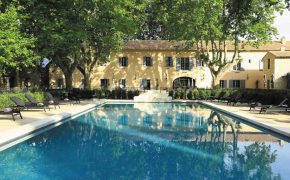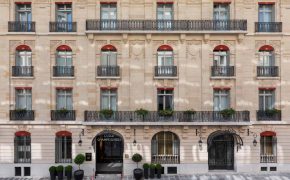Located in the heart of Bucharest, Hotel Capitol is close to numerous businesses, shops and museums. In less than 2 minutes’ walk away you can reach the pedestrian area of the Old Town, also called the heart of Bucharest’s entertainment.
Hotel Capitol has a unique identity of the Bucharest hotels. Built in 1901, the hotel is a living legend, its name being synonymous with history, comfort and impeccable service. Called in the past the Louvre Hotel, the 5-storey building houses a renowned restaurant and café, a favorite meeting place for many writers, musicians and artists.
The brilliant past and the promising future blended perfectly in 2001, when the hotel underwent the restoration process, and then, in 2014, marks the refurbishment and upgrading of the entire building.
We have set high targets and higher standards, constantly guided by the desire to please our guests, and in many cases we host even the fourth generation of loyal customer families.
Discover the perfect balance between harmony and comfort in our 79 rooms, including 10 suites. Due to the perfect location and hospitality of our entire staff, your stay will be comfortable and enjoyable. Hotel Capitol is the perfect host for those visiting Bucharest, both for business and for relaxation.
Hotel Capitol is located in the most vibrant and populated area of Bucharest, on the famous Victoriei Avenue, just a few steps away from the most important tourist attractions such as the National History Museum, the National Art Museum, the Romanian Athenaeum, the National Theater, the Cismigiu Park pedestrian area of the Old Center.
THE HISTORY
Explore Bucharest from the glorious Capitol Hotel, one of the city’s most sophisticated and prestigious landmarks. With more than 100 years long history and situated within the heart of the city, near the most impressive tourist attractions, this Bucharest hotel provides spectacular views of The Palace of the National Military Circle inaugurated in 1923 and Calea Victoriei (Victory Avenue), one of the oldest and most important avenues of Bucharest dating back to the late 1600s.
The history of this building dates back to the late 1600 when this side of the Mogosoaia Bridge (Calea Victoriei) belonged to the Cocorascu family. Some documents of the times show that the Cocorascu wealthy family contributed to the foundation of the Sarindar Monastery.
The Cocorascu family later sold the surrounding lands of the monastery to Ch. I. Zerlendi, a successful cereal trader, who, around 1890 built his building in the Sarindar Suare. Later, Zerlendi with the help of architect Henri de Wurmb added more floors and enlarged the property. This building becomes the offices of Anker Insurance Society from Vienna.
Later, between 1900 and 1905, the building is completely restored under the finances of SAR Imobiliara. This new building becomes “Casa Luvru” due to the famous “Magasin de Luvru” that occupied the ground floor. This store was known for fine merchandise brought from Paris.
Newspapers of the time indicate that during 1905 and 1910 there were many offices in this building such as the Sports Club and the Romanian Writers Association. People could rent the rooms for a day or for months. The Agricultural Anonymous General Insurance Company also had their offices in this building.
In February 1911 because of a fire started from “Magasin de Luvru” the entire building burns down. “Tribuna” newspaper describes all the details of the unfortunate event.
Following a fire in 1911, the Louvre Hotel (or Luvru – back then the name of the building at the corner of Constantin Mille and Calea Victoriei) is remodeled and extended by the famous architect Arghir Culina.
The two wings of the building that correspond to the street fronts are connected through a cylindrical corner-volume, covered by an ornate dome. Through this volume the architect also solves the entrance apparatus, modified today from the initial image, alongside most of the ground floor.
The facade comprises of three main registers, with the middle and upper registers each split into two secondary ones. The middle register’s purpose is two gradually dissolve the facade bossage, in such a way that it becomes almost unnoticeable by the mid-upper sub-register, which is dominated by colossal attached pilasters.
The facade that encloses the Sărindari Fountain square (Flag Square), parallel to the Bulevard Hotel has the upper register split differently than the one along Calea Victoriei, reducing the size of the mansard to a single level, thusly heightening the surface of the facade.
The Eclectic silhouette of the Capitol Hotel remains almost unchanged, except for the ground level of course, for the past 100 years. During WW1, in 1917, the city found itself under German occupation and there were many German signs. Hotel Luvru was occupied by the Germans troups.
Later, under architect Paul Smarandescu, the building becomes Banque Belge pour l’Etranger. Banque Belge pour L’Etranger, founded in 1921, played in Romania, the biggest role of all other branches of foreign banks, due to the significant operating capital put on the Romanian market.
In March 1929, Banque Belge pour l’Etranger in Brussels gave its Romanian branch and agency to the Romanian Business Bank (Banca Comerciala Romana). BCR took all the Belgian capital interests in Romania.
The Luvru building becomes a very well known meeting place when the legendary Café Royal opens at the ground floor in 1935. Café Royal was the favorite meeting place of the famous writers and artists of the time.
The famous Café Royal closes down in 1945 during WW2 when many neighboring buildings were completely destroyed by bombs launched from B 25s. Hotel Luvru was also affected.
In 1950, during communist times, the building becomes the house of the National Union of Consumer Co-operation – CENTROCOOP. In 1976 the building closes down and, after severe restoration and modernization, it reopens as “Hotel Capitol”
Today, Hotel Capitol, after drastic restoration and modernization welcomes guests in a modern and up-to-date settings that still carefully preserves its history and long tradition.
APARTMENT
The apartments offer our guests a warm and soothing atmosphere that perfectly combines relaxation with usefulness. The apartments overlook the building of the Military Circle and Victory Road, providing an unmistakable panorama of the architecture of the past. Guests can take advantage of amenities like Free high-speed, wireless Internet, cable TV and individual climate control.
DOUBLE ROOM
The superior double rooms overlook the Military Circle building, providing an unmistakable panorama of the architecture of the past. Guests can take advantage of amenities like Free high-speed, wireless Internet, cable TV and individual climate control.
THE CAPITOL RESTAURANT
Capitol Hotel shelters at the ground floor the Capitol Restaurant, the favorite meeting places for many writers, musicians and artists since the early 1900s.
During your stay, you can enjoy both international specialties of our chefs and traditional dishes.
The Capitol Restaurant can host 80 persons and it is the ideal place for breakfast, a quick lunch or an elegant dinner. Here, in an elegant and intimate ambiance, with irreproachable services we can also host celebratory dinners.
The Capitol Restaurant is the ‘rendez-vous incontournable’ for both hotel residents and local guests. Thanks to its location on the ground floor of the hotel, the restaurant offers a decadent view of the Palace of the National Military Circle and the Sarindar Fountain.
EVENTS
Hotel Capitol offers two spacious multi purpose rooms to host any important event of your lives. Named after the hotel’s first name, Salon Luvru can host up to 100 people, for weddings, baptisms and private parties.
The second salon, Royalis inspired by the name of the famous café that used to be found in the 1900’s at the ground floor of our historical building. Salon Royal can host up to 60 people for weddings, baptisms and private parties. We are here for you to celebrate together the most important moments of your lives.
BUCHAREST OLD TOWN
Located a few minutes’ walk, the historic centre preserved buildings of the old Bucharest. One can still see residences raised in absolutely different styles: Renaissance, Barocco, neo-classic or combinations of all of these.
Even before the “official birth “ of Bucharest (September 20th, 1459). Lipscani street was the most circulated town area. Its name comes from Lipsca (Leipzig), a thing that reminds us of an extremely dynamic trade life of Walachia.
Once the political and trade centre was settled down at the Old Court, the former was surrounded by numerous guilds of fur merchants, shoe makers, coppersmiths, saddle makers, grocers. Numerous streets in the neighborhood still bear the names of the former guilds.
In this area, one can visit Biserica Stavropoleos. Small construction but altogether remarkable, the Stavropoleos Church dates back to the year 1724.Entrance is free, visiting hours 08.30 -18.00 but it is closed during the divine services. (4, Stavropoleos St, Bucharest).
You may also find here Curtea Veche. The construction was raised by the end of the XIVth century covering an area of about 160 sqm.
Later on, Prince Vlad Tepes decided to extend it to 700 sqm and consolidates the brick walls with river stone blocks. This is the place where Vlad Tepes signed the document dated September 20th, 1459, which testifies for the first time the name of Bucharest.
Manuc’s Inn, is an old building of Bucarest, an important tourist objective as well as a historical monument. Its founder, Manuc Bei (Manuc Marzaian) was born in 1769 at Rusciuc. It is one of Bucharest inns that enjoyed a special fame in the first half of the XIXth century.
Manuc’s Inn is also the place where the Bucharest Treaty was signed in 1812, that led to the territory between the rivers Siret and Nistru of Moldova Principality to be occupied by the Russian Empire. It is one of Bucharest inns that enjoyed a special fame in the first half of the XIXth century.
Manuc’s Inn is also the place where the Bucharest Treaty was signed in 1812, that led to the territory between the rivers Siret and Nistru of Moldova Principality to be occupied by the Russian Empire. Small streets, with flagstone plates, cafes and restaurants in the open looking almost Parisian, await you to spend one evening in the most pleasant way.
HISTORICAL BUILDINGS
Take a stroll on Victory Road and you will discover:
- The National Museum of History (Post Palace): The Post Palace was raised between 1894 and 1900. Since 1971 it has become a museum where the National Treasury is now located. (10 minutes walk) (10 minutes walk)
- Zlatari Chruch:It is situated next to the National Museum of History. It was built in 1637 on the site of an old wood church and later rebuilt in 1715 at the order to Constable Mihai Cantacuzino. (10 minutes walk) (10 minutes walk)
- Doamnei Church: Located at the intersection between Victory Road and Boulevard Elisabeth, the church was founded by Princess Maria, the second wife of Prince Serban Cantacuzino. (5 minutes walk) (5 minutes walk)
- CEC Headquarters (Loan Bank): Situated across the National Museum of History. The building was raised 1900 using the plans of the French architect Paul Gottereau. (10 minutes walk) (10 minutes walk)
- The National Military Centre: The building is situated across from Grand Hôtel du Boulevard. It was built in 1912, in the French Neoclassical style, using the plans of architects Dimitrie Maimarolu, Victor Stefanescu and Ernest Doneaud. (almost 1 minute walk)
- Capsa House: Located diagonally from the National Military Centre. The restaurant was created in 1881. For a century it was one of the best restaurants in the capital. (1 minute walk)
- Odeon Theatre: The building was raised on the site of the former house of Costache Ghica. (2 minutes walk)
- Constantin Tanase Cabaret House: Throughout the interwar period it functioned under the name “Carabus Theatre”, where cabaret and entertainment shows were played by well-known actors, including Constantin Tanase, who gave his name to the theatre. The name has been kept to this day. (2 minutes walk)
- Phone Palace: It was built in 1933 based on the plans of the American architects Louis Weeks and Walter Froy. At the time it was the tallest building in Bucharest with a height of 53 metres. (5 minutes walk)
- Macca-Villacrosse Passage: It was designed by architect Filip Xenopol in 1891. It is covered in glass and it hosts boutiques, coffee shops and private apartments. (5 minutes walk)
- Kretzulescu Chruch: It was founded in 1722 by Iordache Cretzulescu and his wife Safta, the daughter of Prince Constantin Brancoveanu. (5 minutes walk)
- The Monument of the National Revival: It is situated in the Revolution Plaza and was designed by Alexandru Ghildus. It was inaugurated in 2005. (6 minute walk)
- The National Museum of Art (the Royal Palace): It is situated in the Revolution Plaza. The Palace was built based on the plans of architect Nicolae Nenciulescu and it was inaugurated in 1937. Today it hosts the National Museum of Art, which exhibits paintings by Theodor Aman, Nicolae Grigorescu, Ion Andreescu, Stefan Luchian, Theodor Pallady, Gheorghe Petrascu, El Greco, Rembrant, Rubens. (10 minutes walk) (5 minutes walk)
- Senate Palace: It is situated in the Revolution Plaza. Initially it served as location to the Council of Ministers, later as the Headquarters of the Romanian Communist Party. Currently it hosts the Ministry of Administration and Internal Affairs. (6 minute walk)
- Central University Library of Bucharest: It is located across the National Museum of Art. The building was raised in 1893 based on the plans of the French architect Paul Gottereau and it was inaugurated in 1895 by King Carol I. (9 minutes walk)
- Romanian Athenee: It is situated in the Revolution Plaza. The building was raised between 1886 and 1888 after the plans of the French architect Albert Galleron. It also hosts the George Enescu Philarmony. (10 minutes walk)
- The White Chruch: Raised by priest Neagu Darvas at the beginning of the 18th century. Its interior was painted by Gheorghe Tattarescu. (10 minutes walk)
- The Museum of Art Collections (Palace Romanit): The building was raised in 1883 on the place of the former Romanit boyard house built at the beginning of the XIXth century by the boyard Constantin Faca and later on finished and arranged by the Treasurer Romanit. Prince Al.I.Cuza rented the house in order to settle down its Princely Chancery. Since 1978 the building hosts the Museum of Art Collections. (10 minutes walk)
- The Museum of Ceramics and Glassware (Stirbei Palace): It was built in 1835 based on the plans of the French architect Sanjouand. (15 minutes walk)
- The Writers’ Union: It is the former Monteoru House built based on the plans of the architect Nicolae Cutarida. (12 minutes walk)
- Cesianu House: It is situated at the crossroad of Calea Victoriei with Dacia Boulevard and used to be the former headquarters of the German Legation to Bucharest. (15 minutes walk)
- The edifices of the Romanian Academy: Situated across Victoria Casino, the building of the Romanian Academy is one of the oldest constructions of the Capital, being the former Cesianu boyard house. The Academy has its headquarters in this building since 1890. The building of the Academy Library was raised based on the plans of the architect Duiliu Marcu and is situated behind the Academy gardens. (15 minutes walk)
- Saint Nicolae Tabacu Church: Located opposite to the Romanian Academy and it was built at the end of the XVIIth century. (15 minutes walk)
- Vernescu House: It was raised around 1820 by the Lens family. In 1886 it becomes the property of Gheorghe Vernescu. The building was completely rearranged by the architect Ion Mincu. (20 minutes walk)
- The Institute of Art History: It is situated at the crossroad of Calea Victoriei with G. Manu street opposite to George Enescu Museum; it is the former house of the lawyer Dissescu.The building was built by the architects Grigore Cerkez and A.Clavel in an eclectic style. (20 minutes walk)
- The Cantacuzino Palace (The National Museum “George Enescu”): The edifice was constructed based on the plans of the architect I.D. Berindei in a rococo, French neo-classic and art-nouveau style during the period 1898 -1900. The façade of the building has a monumental entrance guarded by two lions. During the 2nd World War, the palace used to be the headquarters of the presidency of the Council of Ministers. (20 minutes walk)
